Abstract
Turner syndrome (TS) carriers seem to present cognitive compensation of profile of reduction in visuospatial skills during development. Thus, a psychopedagogical intervention was performed in order to optimize this mechanism.
Three pairs of age matched 45, X girls were evaluated at two moments (pre and posttest) for the Bender test (BT) and specific Piaget’s tasks or scales (PS). The experimental intervention through the environmental solicitation process was applied for one year to each pair girl with learning disabilities.
Experimental subjects (ES) revealed more ability to planning and organizing their graphic expression in the posttest, as well as presented a decrease in number of brain lesion indicators on their BT performance. ES also showed performance improvement in half of PS (e.g. conservation and measurement of volumes task).
Data suggest that the present intervention instruments may have contributed to the performance increment of the experimental TS girls.
Keywords
Turner syndrome cognition; cognitive compensation; psychopedagogic intervention; Piaget’s tasks or scales; Bender-Gestalt test.
Introduction
Turner syndrome is consequent to total or partial absence of one X-chromosome. Specific profile of reduction in visuospatial skills besides other cognitive or neuropsychological (arithmetic and executive function) and neurophysiological characteristics among subjects with Turner syndrome (TS) has been widely described [1–8]. TS girls seem to have cognitive compensation of that visual deficit throughout their growing-up [7, 9]. With the hypothesis of a gradual increasing to this mechanism, a Piagetian psychopedagogic intervention was planned in order to optimize the heteromodal connections of brain areas, associated to the development of neuropsychological compensation.
Piagetian scales and experimental intervention through the environmental solicitation process [10] “make use of the clinical method [11], which guarantees an affective-emotional optimization in order to promote the best child intellectual performance and to more accurately evaluate their individual cognitive potential”[7].
In addition, clinical method seems to be particularly appropriate for a evaluation or/and intervention with Turner syndrome carriers as far as their verbal performance is within (or above) most population average [12–15], since this method facilitates the establishment of relations and the argumentation in favor of the subject’s own ideas [11, 16]. ZAIA, [17] still expounds that “the critical clinical method is to follow the unfolding of the child’s thinking, adapting questions to the actions and speeches of the child, enabling the free and personal expression of the child’s ideas. This process is still characterized by the adult’s effort to use the child’s language, not to suggest anything, not to give clues to the answers and to understand the child’s point of view without deforming it.”
Materials and Methods
This investigation was approved by the Ethics Committee of Federal University of São Paulo- Paulista School of Medicine (UNIFESP-EPM), protocol number 1040/08. Only patients whose legal guardians signed an informed consent were included in this study.
Three pairs of age matched 45, X girls were evaluated at two moments (evaluation and revaluation; or pretest and posttest) for the Bender test (BT) and specific Piaget’s tasks or Piagetian scales (the latter apparently have been applied to TS carriers only twice before [4, 7]).
In between, the experimental intervention through the environmental solicitation process (developed by Mantovani de Assis [10], according to Piaget’s theory; and adapted to psychopedagogic intervention by Zaia [18]) was applied to experimental subjects in order to propitiate thinking development. The experimental intervention, lasting one year, was performed to each pair girl that presented learning disabilities.
The BT was administered according to Clawson [19] (Figure 1). The examiner registered each subject’s visual motor performance, which was further analyzed with Koppitz method [20] by psychologists specialized in BT.
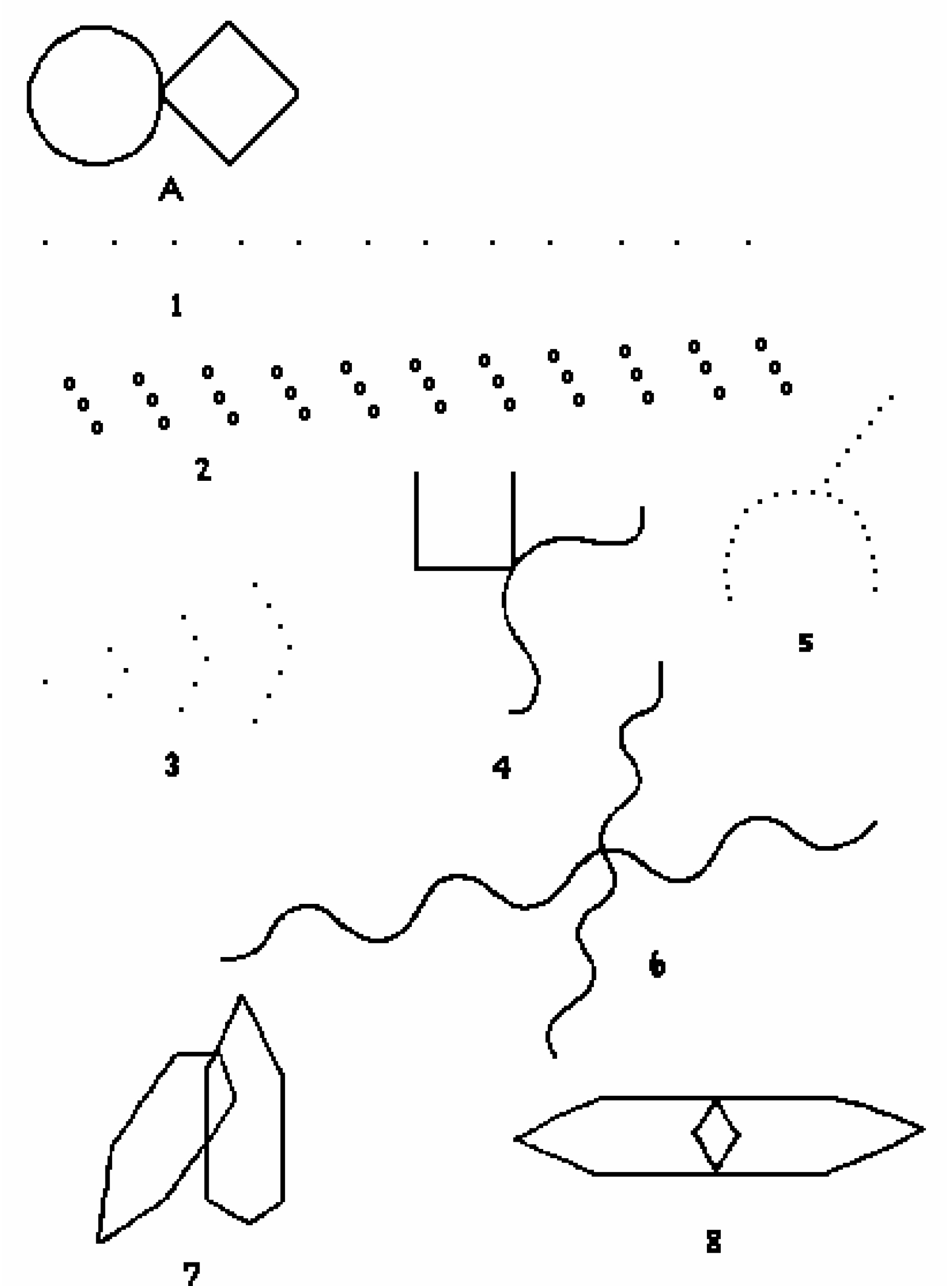
Figure 1. Stimulus-models from Bender visual motor gestalt test used on the present investigation according to Clawson (1980).
Piagetian scales (PS) consisted of the construction of reflective abstraction (Correlate Formation (FC); and Relationships between Surfaces and Perimeters of Rectangles (SP) [21]); representation space (projective straight line construction (PSL); and viewpoints or perspectives coordination (“three mountains”; 3M) [22, 23]; and conservation of physical quantities (Conservation and Measurement of Volumes; CMV [24]) tasks. In addition, the Discover the Animal Game (DA) [25] was employed to evaluate logical structures and concept construction.
Intervention process comprised a series of appropriate psychopedagogic instruments, selected in order to develop those aspects which presented development delay during evaluation through Piagetian tasks: Discover the Animal Game (classification) [25], Memory Game (memory) [26], activity of making rolls into several formats using the same amount of modeling clay, for the construction of conservation of continuous quantities [27] and wooden building blocks (Playing Engineer [28]) for the conservation of discrete quantities. For the construction of spatial relations, Headsnake [29] and Magic Bag [29] games were picked out as well as activities like puzzles [30], figures assembly [31], free drawing and geometrical figures fitting. Causal relationships establishment was stimulated by the Semblance [29], Total Balance [29] and Pick-up-Sticks [32] games besides the fluctuation of body’s activity [27]. Furthermore, narrative construction [33] and activities with numbers (Semblance game [29], e.g.) were applied to facilitate the construction of school skills. Finally, in order to provide own body knowledge and mastery, the following activities were proposed: body scheme, making the child’s body outline with wax pencil followed by requesting her to represent different body parts of her own; songs with gestures (e.g.: “Hokey- Pokey”); clay doll followed by its drawing. Table 1 presents the games and activities used in the intervention for each experimental subject beyond the total number of intervention sessions per subject.
Table 1. Games and activities employed during psychopedagogical intervention (environmental solicitation) applied to each experimental subject (ES) and their respective purposes; and total number of sessions per subjects.
|
Games and activities to propitiate |
Subjects |
||
|
Logical relationships development |
ES1 |
ES2 |
ES3 |
|
Classification: Discover the animal Game |
X |
X |
X |
|
Continuous quantities conservation: making rolls |
X |
X |
X |
|
Memory: Memory Game |
X |
X |
X |
|
Real construction |
|||
|
Space: |
|||
|
Headsnake Game |
X |
||
|
Puzzles |
X |
X |
X |
|
Magic Bag Game |
X |
X |
X |
|
Free drawing |
X |
X |
X |
|
Playing Engineer (wooden building blocks) |
X |
X |
X |
|
Figures assembly |
X |
X |
X |
|
Geometrical figures fitting |
X |
||
|
Causality: |
|||
|
Sambalance Game |
X |
X |
X |
|
Activities with objects that float or sink |
X |
X |
|
|
Total Balance Game |
X |
X |
X |
|
Pick-up sticks Game |
X |
X |
|
|
Oral and written language construction |
|||
|
Narrative construction |
X |
X |
X |
|
Dictation |
X |
||
|
Number recognition (and arithmetic operations) |
|||
|
Sambalance game |
X |
X |
X |
|
Calculation (regarding the pick up sticks game play) |
X |
||
|
Psychomotor activities: body image construction, rhythm and movement control |
|||
|
Body outline made with wax pencil complemented with different body parts representation |
X |
X |
|
|
“Hokey Pokey” (music with gestures) |
X |
||
|
Modeling-clay (e.g.: clay doll) |
X |
X |
X |
|
Doll drawing |
X |
||
|
Songs |
X |
X |
X |
|
TOTAL NUMBER OF INTERVENTION SESSIONS |
36 |
36 |
27 |
It is noteworthy that both the application of Piagetian tasks and the process of psychopedagogic intervention used the critical Piagetian clinical method [11, 16–17], which fundamental aspects were previously reported in this paper.
Results
Bender test
Data referring to performance by experimental and control subjects on Bender test (Table 2; Figures 2 to 7) exhibit that from seven years old on impulsivity diminished. On the other hand, time required to perform BT increased with age (Table 2). Furthermore, both experimental TS girls younger than ten during posttest (ES1 and ES2) improved the use and planning of spaces of gestalts.
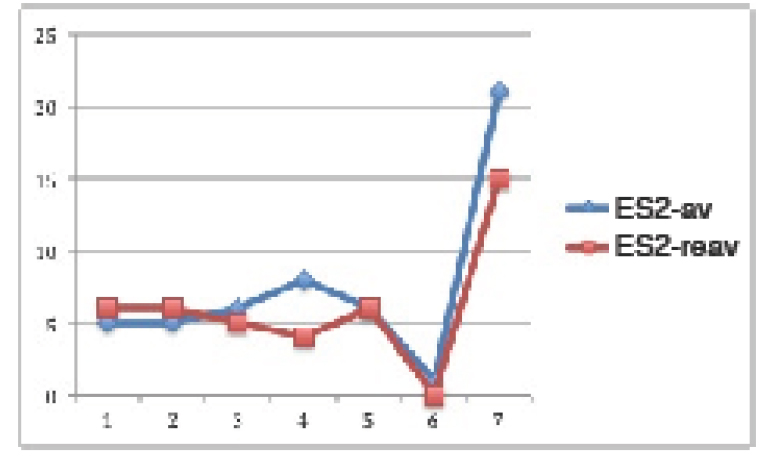
Figure 2. Evaluation of ES2, at five yr and 2nd examination at six yr.
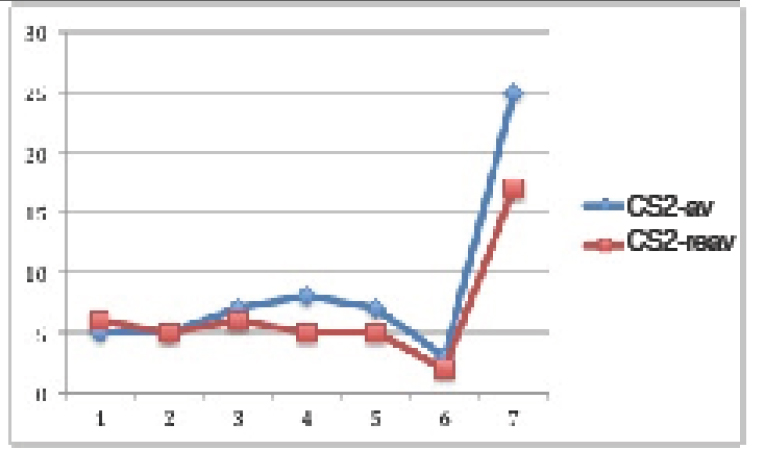
Figure 3. Evaluation of CS2, at five yr and 2nd examination at six yr.
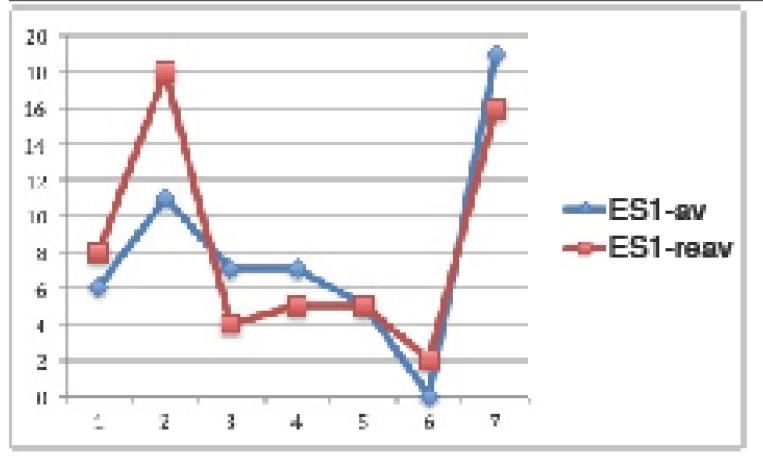
Figure 4. Evaluation of ES1, at six yr, and 2nd evaluation at eight yr.
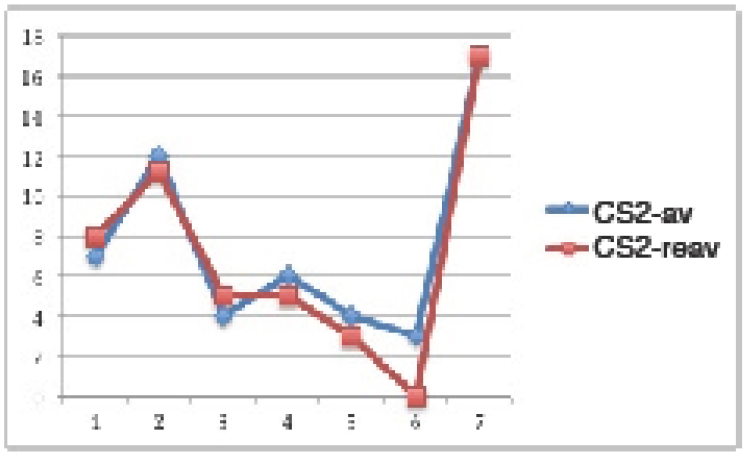
Figure 5. Evaluation of CS2, at seven yr, and 2nd evaluation at eight yr.
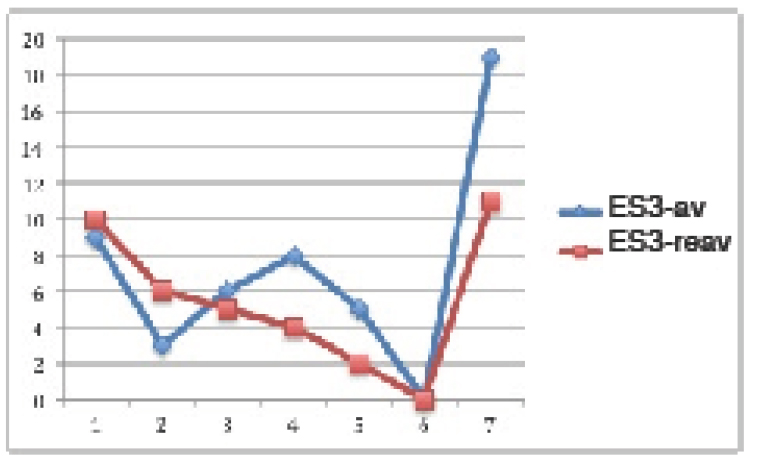
Figure 6. Evaluation of ES3, at nine yr. and 2nd evaluation at 10 yr.
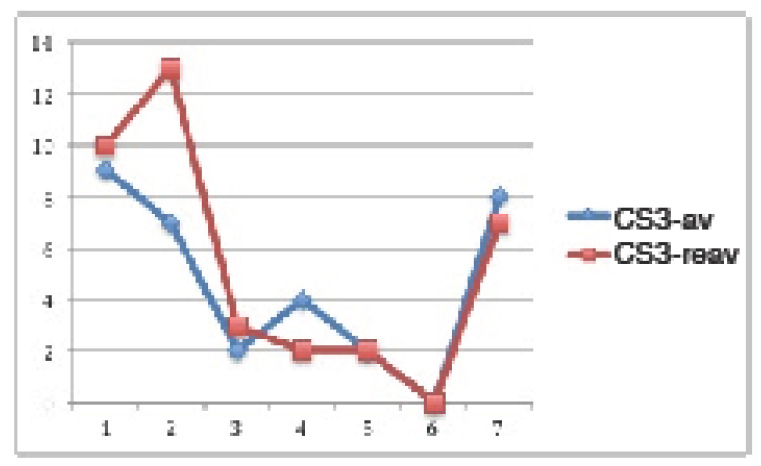
Figure 7. Evaluation of CS3, at nine yr, and new assessment at 10 yr.
Legend
1- Age; 2-Time; 3-Form distortion; 4-Rotation: 5-Integration; 6-Perseveration: 7-Score
Table 2. Performances of experimental (ES) and control (CS) subjects on Bender test and respective ages (A) and significative (+) or not significative (-) number of brain lesion (BL) indicators.
|
Subjects |
A (y;m) |
Step |
Time |
F |
R |
I |
Pe |
Score |
Visual motor perception level |
BL |
BL# |
BL## |
BL (meaning) |
BL (difference) (R-E) |
|
ES1
|
(06;10) |
Evaluation |
11’ |
7 |
7 |
5 |
0 |
19 |
Below 5 years |
21 |
+ |
+ |
anxiety and space disorganization |
-6 |
|
(07;11) |
Revaluation |
18’ |
4 |
5 |
5 |
2 |
16 |
Below 5 years |
15 |
+ |
+ |
improved in space planning and decreased in impulsivity |
||
|
CS1
|
(07;01) |
Evaluation |
12’ |
4 |
6 |
4 |
3 |
17 |
Below 5 years |
17 |
+ |
+ |
CS1 erased during performance and exhibited disorganization and lack of space planning |
-4 |
|
(08;02) |
Revaluation |
11’ |
5 |
5 |
3 |
0 |
13 |
5 years and 5 years and 5 months |
13 |
+ |
+ |
disorganization and lack of space planning |
||
|
ES2
|
(05;00) |
Evaluation |
05’ |
6 |
8 |
6 |
1 |
21 |
Below 5 years |
13 |
+ |
+ |
impulsivity and space disorganization |
-5 |
|
(06;02)- (06;03) |
Revaluation |
06’ |
5 |
4 |
6 |
0 |
15 |
Below 5 years |
08 |
+ |
– |
ES2 retouches copies during performance and shows impulsivity and disorganization |
||
|
CS2
|
(05;03) |
Evaluation |
05’ |
7 |
8 |
7 |
3 |
25 |
Below 5 years |
25 |
+ |
+ |
CS2 retouches a lot during performance besides exhibiting space disorganization |
-5 |
|
(06;02) |
Revaluation |
05’ |
6 |
5 |
5 |
2 |
18 |
Below 5 years |
20 |
+ |
+ |
CS2 showed improvement in perception although space kept disorganized |
||
|
ES3
|
(09;00) |
Evaluation |
03’ |
6 |
8 |
5 |
0 |
19 |
Below 5 years |
20 |
+ |
+ |
impulsivity and lack of space planning |
-16 |
|
(10;04) |
Revaluation |
06’ |
5 |
4 |
2 |
0 |
11 |
5½ and 5 years and 11 months |
04 |
– |
– |
Anxiety. Nevertheless, ES3 exhibited an outstanding improvement in space planning |
||
|
CS3
|
(09;02) |
Evaluation |
07’ |
2 |
4 |
2 |
0 |
08 |
6 and 6 years and 5 months |
05 |
– |
– |
CS3 retouches during performance |
2 |
|
(10;05) |
Revaluation |
13’ |
3 |
2 |
2 |
0 |
07 |
6½ and 6 years e 11 months |
07 |
– |
– |
CS3 erased a lot and retouched copies. Also still showed good usage of space. However, exhibited anxiety to improve gestalt |
Age = (years; months); F = form distortion; R = rotation; I = integration; Pe = perseveration; #UnG (Guarulhos University) standard: n = 8; ##APEP (Psychology and Psychotherapy Studies Association) standard: n = 10; E = evaluation; R = revaluation.
Table 2 also shows that most (5/6) of all subjects presented decrease in number of brain lesion indicators from evaluation to revaluation. It is noteworthy that such difference was greater for two experimental subjects (ES1 and ES3).
On the contrary, ES2 did not present a BL decrease greater than her respective control (CS2). Although ES2 and CS2 showed the same BL decrease, the former diminishment was from a significative to a non significative value, according to one of the two considered standards (Table 2).
Moreover, nearly all propositii (5/6) showed improvement on all scores of their performances on Bender test (evaluation and revaluation compared; table 2), either experimental (3/3) or control (2/3) ones.
Piagetian tasks or Piagetian Scales
Data referring to performance by experimental and control subjects on conservation and measurement of volumes and other Piagetian tasks during evaluation and revaluation are given in Table 3.
Table 3. Performances of experimental (ES) and control (CS) subjects classified by Piagetian Scales (PS) and respective ages (A) and final diagnoses (FD)
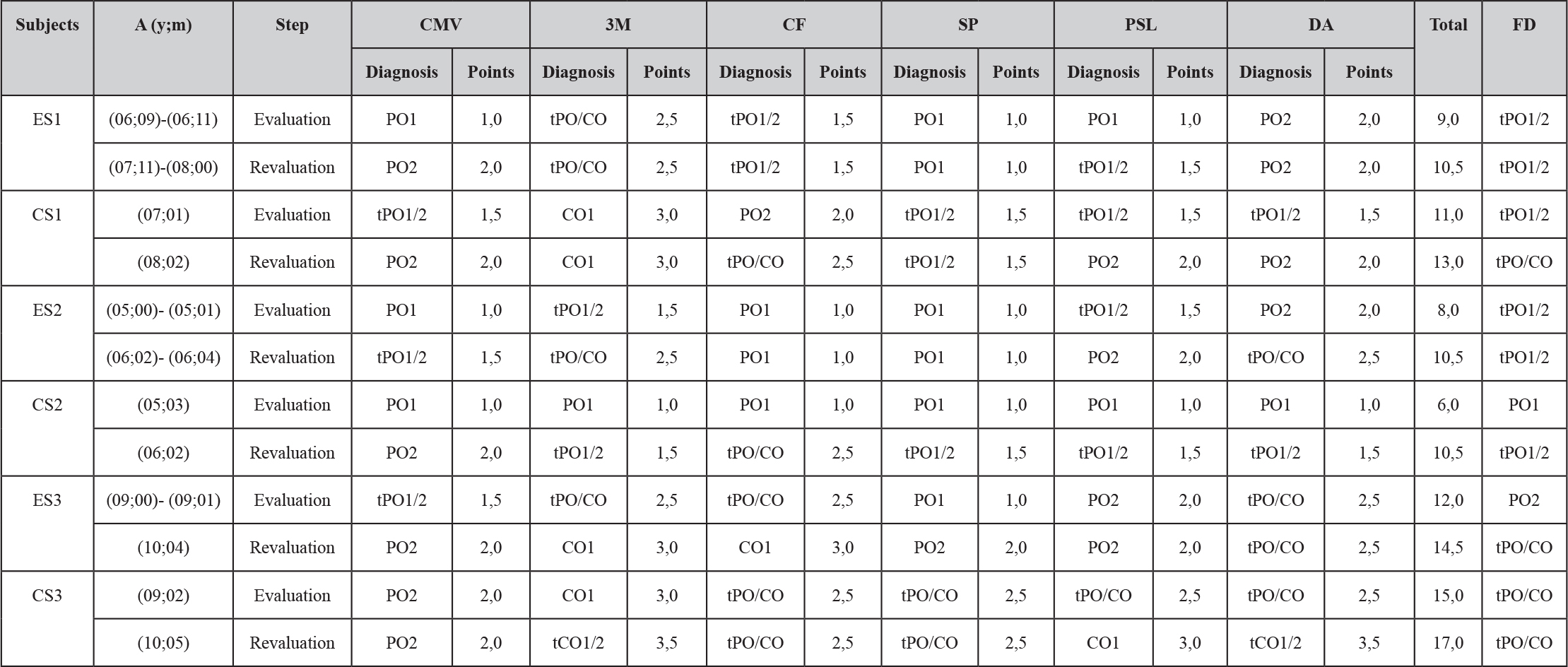
PS tasks: CMV = conservation and measurement of volumes; 3M = viewpoints or perspectives coordination (“three mountains”); CF = correlate formation; SP = relationships between surfaces and perimeters of rectangles; PSL = projective straight line construction. Game: DA = discover the animal. For abbreviations of diagnosis, see legend to Table 4.
Table 4 exhibits the reference values for the final operatory diagnosis corresponding to the sum of points of individual performance on each Piagetian task.
Table 4. Reference values for the final operatory diagnosis corresponding to the sum of points of individual performance on each Piagetian task.
|
Total points |
Final diagnosis |
|
6,0 |
PO1 |
|
6,5 – 11,5 |
tPO1/2 |
|
12 |
PO2 |
|
12,5 – 17,5 |
tPO/CO |
|
18,0 |
CO1 |
|
18,5 – 22,5 |
tCO1/2 |
|
23 |
CO2 |
|
23,5 – 24,5 |
tCO/FO |
|
25 – 30 |
FO1 |
PO = pre-operatory period; PO1 = the beginning stage of the pre-operatory period; tPO1/2 = transition between Pre-Operatory Stage 1 and the Pre-Operatory Equilibrium Level; PO2 = Pre-Operatory Equilibrium Level; tPO/CO = transition between pre-operatory and concrete operatory periods; CO = concrete operatory period; CO1 = the beginning stage of the concrete operatory period; tCO1/2 = transition between the beginning stage and the stage in equilibrium of the concrete operatory period; CO2 = concrete operatory equilibrium level; tCO/FO = transition between the concrete operatory and the formal operatory periods; FO1 = the beginning stage of the formal period; FO = formal operatory period.
In addition, Figure 8 presents the comparison between experimental (ES) and control (CS) subjects performances classified by Piagetian scales (PS) during evaluation and revaluation. Table 3 and Figure 8 analyses enable to compare the progress achieved by the experimental and control subjects in the different Piagetian tasks.
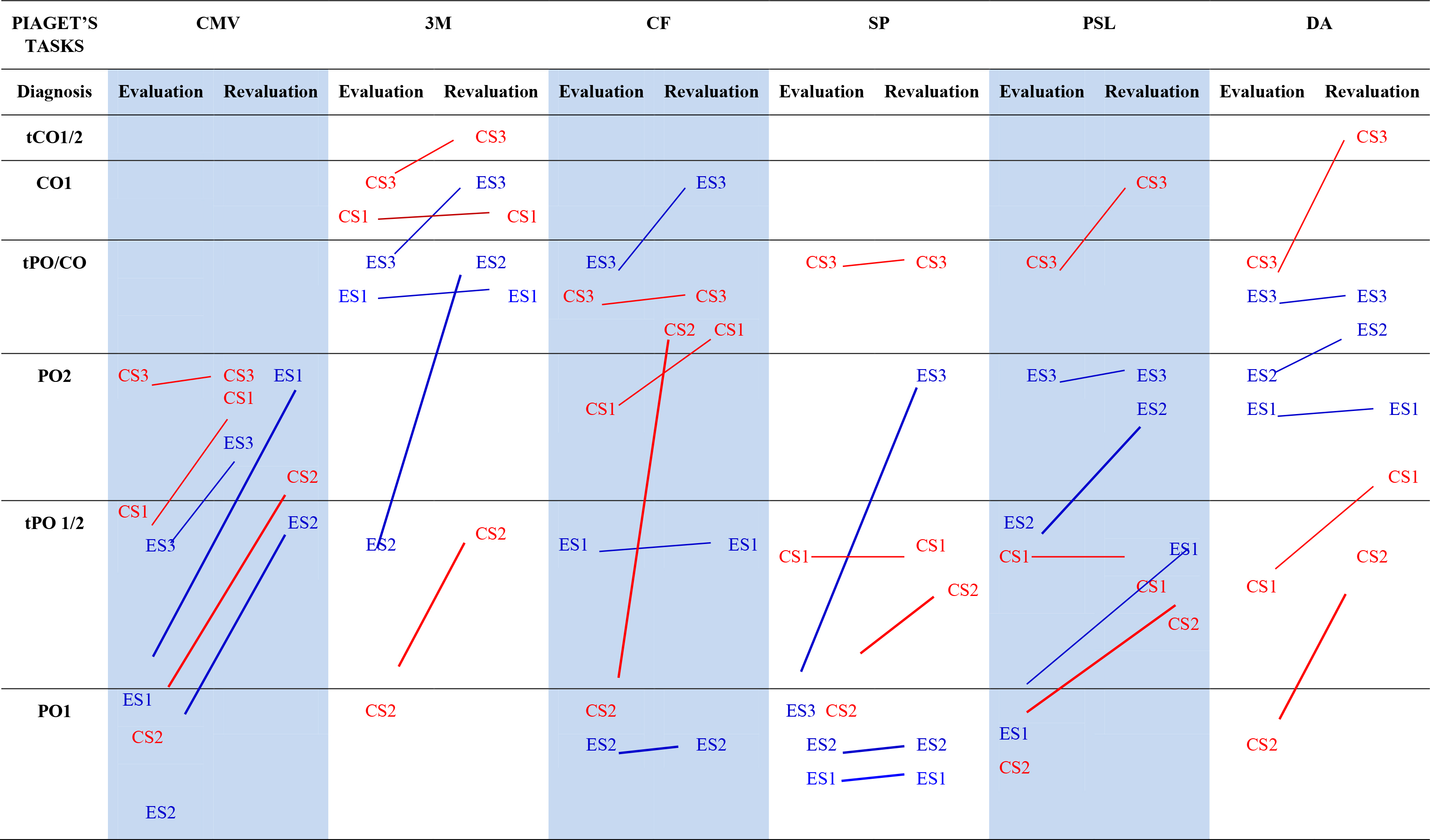
Figure 8. Comparison between experimental (ES) and control (CS) subjects performances classified by Piagetian scales (PS) during evaluation and revaluation. PS tasks: CMV = conservation and measurement of volumes; 3M = viewpoints or perspectives coordination (“three mountains”); CF = correlate formation; SP = relationships between surfaces and perimeters of rectangles; PSL = projective straight line construction. Game: DA = discover the animal.
The great majority (5/6) achieved progress in Conservation and Measurement of Volumes task (CMV). In groups comparison, all experimental (three) and most (2/3) control subjects presented better performance in CMV during posttest than in the pretest (Table 3)
Thus, in CMV task and among controls, one subject (CS3) did not achieve progress, whereas the other two presented one (CS1) and two (CS2) levels of progress. In addition, among experimental subjects, two (ES2 and ES3) achieved one level while ES1 achieved two levels of progress (Figure 8). However, in Discover the Animal game 4/6 of the subjects presented progress on their performances, that means every control and one experimental subject (ES2; Figure 8).
Data referring to performance by control and experimental subjects in representation space tasks revealed that two of each group (4/6) achieved progress in the “Three Mountains” (CS2 and CS3; ES2 and ES3) and in the Projective Straight Line (CS2 and CS3; ES1 and ES3; Figure 8) tasks. Also considering the progress amplitude, only ES2 presented two levels whereas the other experimental and both control subjects showed one level of progress in 3M, in pretest and posttest comparison.
Concerning reflective abstraction, half of the subjects (3/6) achieved progress on their performance in Correlate Formation task that means two controls (CS1 and CS2) and one from the experimental group (ES3). The progress amplitude corroborates this observation, as far as one of the controls (CS2) presented three levels while CS1 and the experimental subject showed only one level of progress (Figure 8).
Nevertheless, still considering abstraction, despite only one subject of each group (CS1 and ES3) have achieved progress on their performances in the Relationships between Surfaces and Perimeters of Rectangles task, the control showed one level whereas the experimental subject, two levels of progress.
Discussion
It is noteworthy that Turner syndrome has a cognitive impact besides a physical one [8, 34–36]. Thus TS girls and teenagers should be provided a demanding formal assessment, orientation and/or intervention [7, 8, 34, 37].
In the present investigation, there was a difference on BT performance in favor of the experimental subjects (ES), who presented more ability to planning and organizing their graphic expression.
Increase in time required to perform BT with age was probably due to older subjects effort in order to more carefully accomplish gestalts.
Furthermore, improvement in use and planning of spaces of gestalts of both experimental TS girls younger than ten during posttest (ES1 and ES2) suggests those subjects took more advantage of intervention procedures than the eldest one (ES3). Also, it is likely that neurological functions in development have been benefited by intervention process stimuli. This assumption is based on number of brain lesion indicators (BL) decrease revealed by BT.
Unlike both other experimental subjects, ES2 did not present a BL decrease greater than her respective control (CS2) inasmuch as the observed hindrance to cooperate in the beginning of the intervention process, specifically refusing several times to accomplish or to repeat the suggested activity. The latter behavior could be due to pre-operativeness characteristics ES2 presented at that time.
Improvement of nearly all propositii on all scores of their performances on Bender test may be assumed mostly to their natural development, in controls case. On the other hand, it is reasonable to consider the benefit of intervention that favours the subject in order to explain the considerable decrease ES3 presented for brain lesion indicators on her BT performance.
However, a new investigation with a greater number of subjects and its replication by other researchers would be necessary to corroborate such supposition.
The present data may reinforce how important psychopedagogic intervention process can be to Turner syndrome carriers. In addition, the earlier such intervention occurs the more convenient it will be, as well as should the family be advised with this purpose.
Besides, on three Piagetian tasks (CMV, 3M and SP) a greater progress was observed in most experimental subjects.
This mentioned difference, if explained by the influence of psychopedagogic intervention, shows how the instruments employed along the latter might influence conservation construction on TS girls.
This may be confirmed by the amplitude (namely the relationship between the beginning performance level at the pretest and that achieved at the posttest) of progresses achieved by experimental and control subjects performances analysis.
This relationship suggests the intervention process might have influenced on the conservation construction.
Moreover, on projective straight line task subjects performances were similar in both groups.
On the other hand, controls achieved higher progress in CF and in Discover the Animal game as in number of subjects as in the amplitude of progresses.
Therefore, this led us to consider that concept construction and classification were not influenced by psychopedagogic intervention instruments. This finding may be confirmed by the progresses amplitude as far as the only experimental subjects and all the controls achieved one level of progress each.
So, considering the number of subjects which achieved progresses in the space construction, we do not find there was influence from the intervention process, as far as it was the same in both experimental and control groups. However, if we also consider the progress amplitude, only ES2 presented two levels whereas the other experimental and both control subjects showed one level of progress in 3M, in pretest and posttest comparison. In conclusion, we suppose there was a slight influence of psychpedagogic intervention, in this case. Finally, it is noteworthy that a more detailed analysis of intervention through the environmental solicitation process and its influence on experimental subjects performances will be addressed in an upcoming publication.
Conclusion
According to Bender [38], the gestalt visual-motor functions basically may be associated with language aptitude, time and space organization, and to manual motor abilities. One concluded there was an improvement on the quality of gestalt functions, observed in the paper organization and drawings planning, and that psychopedagogical activities have probably influenced on the Bender test organization and planning, so presumably contributing to ameliorate cognitive performance of three girls with Turner syndrome. In conclusion, greater performances progresses observed among experimental subjects on Bender test, when compared to those presented by controls, suggest the psychopedagogic intervention accomplished during the present study may have contributed to optimize the cognitive compensation of the experimental subjects visual motor deficit.
Nevertheless, the environmental solicitation process should be applied to a greater number of TS girls and preferably for a longer period of time in order to confirm the conclusion above.
References
- Shaffer JW (1962) A specific cognitive deficit observed in gonadal aplasia (Turner’s syndrome). J Clin Psychol 18: 403–406. [crossref]
- Garron DC (1977) Intellegence among persons with Turner’s syndrome. Behav Genet 7: 105–127. [crossref]
- Money J (1968) Cognitive deficits in Turner’s syndrome. In: Vandenberg SG. (Ed.) Progress in human behavior genetics. J. Hopkins, Baltimore, USA.
- Ricardi FCF (1996) Cognição na síndrome de Turner: investigação de 28 sujeitos com o Teste de Bender e as Escalas de Piaget. Masters of Science thesis, São Paulo: USP.
- Ross J, Stefanatos GA, Kushner H, Zinn A, Bondy C, Roeltgen D (2002) Persistent cognitive deficits in adult women with Turner syndrome. Neurology 58: 218–225. [crossref]
- Ross J, Roeltgen D, Zinn A (2006) Cognition and the sex chromosomes: studies in Turner syndrome. Horm Res 65: 47–56. [crossref]
- Ricardi FCF, Zaia LL, Pellegrino-Rosa I, Rosa JT, Mantovani de Assis OZ, et al. (2010) Psychogenetics of Turner syndrome: an investigation of 28 subjects and respective controls using the Bender test and Piagetian scales. Genet Mol Res 9: 1701–1725. [crossref]
- Hong DS, Reiss AL (2012) Cognition and behavior in Turner syndrome: a brief review. Pediatr Endocrinol Rev 9: 710–712. [crossref]
- Ricardi FCF, Pellegrino-Rosa I, Rosa JT, Saldanha PH (2002) Síndrome de Ullrich-Turner: investigação de 21 sujeitos com o teste de Bender. Águas de Lindóia: Sociedade Brasileira de Genética (Ed.), Resumos do 48. Congresso Nacional de Genética, CD-ROM.
- Mantovani de Assis OZ (1976) A solicitação do meio e a construção das estruturas lógicas elementares na criança. Ph.D. thesis. Campinas: Unicamp.
- Vinh-Bang (1970) El método clinico y la investigación en psicologia del niño. In: Ajuriaguerra J et al. (Eds). Psicologia y epistemologia genéticas: temas piagetianos. Buenos Aires: Proteo.
- Shankar RK, Backeljauw PF2 (2018) Current best practice in the management of Turner syndrome. Ther Adv Endocrinol Metab 9: 33–40. [crossref]
- Temple CM, Shepard EE (2012) Exceptional lexical skills but executive language deficits in school starters and young adults with Turner syndrome: implications for X chromosome effects on brain function. Brain Lang 120: 345–359. [crossref]
- Hong D, Scaletta Kent J, Kesler S (2009) Cognitive profile of Turner syndrome. Dev Disabil Res Rev 15: 270–278. [crossref]
- Ross JL, Stefanatos GA, Kushner H, Zinn A, Bondy C, Roeltgen D (2002) Persistent cognitive deficits in adult women with Turner syndrome. Neurology 58: 218–225. [crossref]
- Piaget J (1975) Os problemas e os métodos. In: A Representação do Mundo na Criança. Rio de Janeiro: Brazil.
- Zaia LL (2015) O atendimento psicopedagógico pelo processo de solicitação do meio. Revista Educação 9: 117–127.
- Zaia LL (1996) A solicitação do meio e a construção das estruturas operatórias em crianças com dificuldades de aprendizagem. Ph.D. thesis, Campinas: Unicamp, Brazil.
- Clawson A (1980) Bender infantil: manual de diagnóstico clínico. Porto Alegre: ArtMed, Brazil.
- Koppitz EM (1966) The Bender gestalt test for young children. New York: Grune & Stratton, USA.
- Piaget J (1995) Abstração reflexionante: relações lógico-aritméticas e ordem das relações espaciais. Porto Alegre: ArtMed, Brazil.
- Piaget J, Inhelder B (1993) A representação do espaço na criança. Porto Alegre: Artmed, Brazil.
- Kobayashi MCM (1998) A construção das relações espaço-geométricas em crianças de educação infantil: um estudo de epistemologia genética. Masters of Science thesis. Marília: Unesp, Brazil.
- Piaget J, Aebli MH, Pitsou MF (1948) La conservation et la mesure des volumes. In: Piaget J, Inhelder B, Szeminska A. La géométrie spontanée de lénfant. Paris: Presses Universitaires de France, France: 448–483.
- Piaget J, Sakellaropoulo M, Henriques-Christophides A (1996) Em direção à circularidade dialética mais geral das conexões lógicas: a determinação de alguns animais ou objetos. In: Piaget J. As formas elementares da dialética. São Paulo: Casa do Psicólogo, Brazil.
- Jogo da Memória- Brinquedos (Memory Game- Toys) (24 peças em madeira). Xalingo brinquedos. Fabricado por: Xalingo S/A Indústria e Comércio. CNPJ: 95.425.534/0001-76. Santa Cruz do Sul, Brazil.
- Mantovani de Assis OZ, Assis MC (Orgs.) (2004) PROEPRE: prática pedagógica. Campinas: Graf. FE; LPG, 3.
- Brincando de Engenheiro (Playing Engineer) (42 peças). Xalingo brinquedos. Fabricado por: Xalingo S/A Indústria e Comércio. Santa Cruz do Sul, Brazil.
- Zaia LL (2008) A construção do Real na criança: a função dos jogos e das brincadeiras. Schème 1: 74–94.
- Quebra-cabeça: The Flintstones (30 peças em madeira- 22X18 cm). Start. Fabricado por: L. Moller. São Paulo, Brazil.
- Monta-figuras (Mounting Pictures): Turma da Mônica (24 peças em madeira). Xalingo brinquedos. Fabricado por: Xalingo S/A Indústria e Comércio, Santa Cruz do Sul, Brazil.
- Pega-Varetas (28 varetas). Fabricado por: Algazarra Ind. e Com. de Brinquedos Ltda. São Paulo, Brazil.
- Sauer MIM (2000) A construção da narrativa infantil e suas relações com a construção do espaço. Masters of Science thesis, Campinas: UNICAMP, Brazil: 73–107.
- Erhan H, Belotserkovsky J (2014) Neuropsychological impact of Turner syndrome: importance of parent education, early detection and intervention: a case study. Arch Clin Neuropsychol 29: 544–545.
- Saad K, Abdelrahman AA, Abdel-Raheem YF, Othman ER, Badry R, Othman HA, Sobhy KM (2014) Turner syndrome: review of clinical, neuropsychiatric and EEG status: an experience of tertiary center. Acta Neurol Belg 114: 1–9. [crossref]
- Kesler SR, Sheau K, Koovakkattu D, Reiss AL (2011) Changes in frontal-parietal activation and math skills performance following adaptive number sense training: preliminary results from a pilot study. Neuropsychol Rehabil 21: 433–454. [crossref]
- Mueller SC (2013) Magnetic resonance imaging in paediatric psychoneuro-endocrinology: a new frontier for understanding the impact of hormones on emotion and cognition. J Neuroendocrinol 25: 762–770. [crossref]
- Bender L (1938) A visual motor Gestalt test and its clinical use. New York: American Orthopsychiatric Association, Res. Monograph, USA: 103.